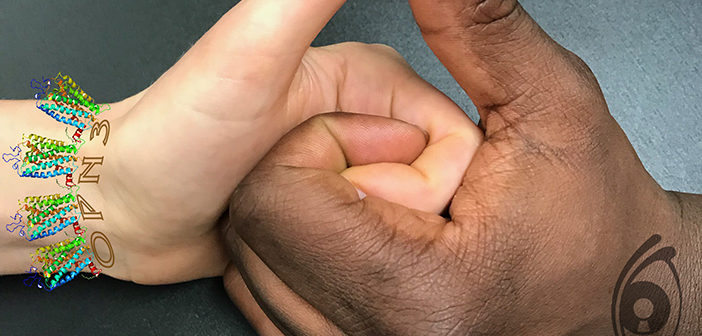Researchers discover how a member of a family of light-sensitive proteins adjusts skin color.
A team of Brown University researchers found that opsin 3—a protein closely related to rhodopsin, the protein that enables low-light vision—has a role in adjusting the amount of pigment produced in human skin, a determinant of skin color.
When humans spend time in the sun without proper skin protection, the sun’s ultraviolet radiation signals the skin to produce more melanin, which protects against the cancer-causing effects of the radiation, and become darker. There are two parts to solar UV radiation: short wavelength radiation, or UVB; and long wavelength radiation, or UVA. Each part is detected by the skin in different ways; how UVB makes humans tan has been known for a while.
On the other hand, scientists know less about how skin detects and responds to UVA, the more abundant kind of solar UV radiation. Elena Oancea, PhD, an associate professor of medical science, has been studying precisely this question. In 2015, when her team uncovered the first clues to indicate that melanocytes, specialized skin cells that produce the pigment melanin, have an abundance of opsin 3, they thought that opsin 3 might be the receptor that detects UVA and signals increased melanin production.
Four years and four major surprises later, the team’s findings were published on May 16 in Proceedings of the National Academy of Sciences.
“We’ve found the role of opsin 3 in human melanocytes and figured out the molecular steps that allow opsin 3 to achieve this function,” Oancea says. “Opsin 3 modulates how much pigment the cells make, but, surprisingly, it does so independent of light. This mechanism is a new paradigm for opsins. Once we learn more about opsin 3, it may be a good target for treating pigmentation disorders.”
Continue reading here.




